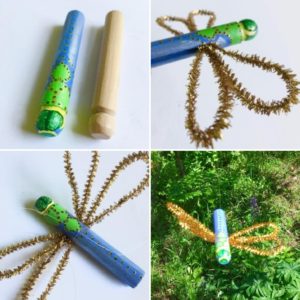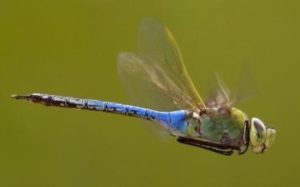Greetings from the Kids’ Corner at Mount Agamenticus! For our sixth season, we’re going digital, and we hope you’ll join us! Today, Mrs. J is teaching us a little bit about dragonflies, some of our favorite summer mosquito eaters!
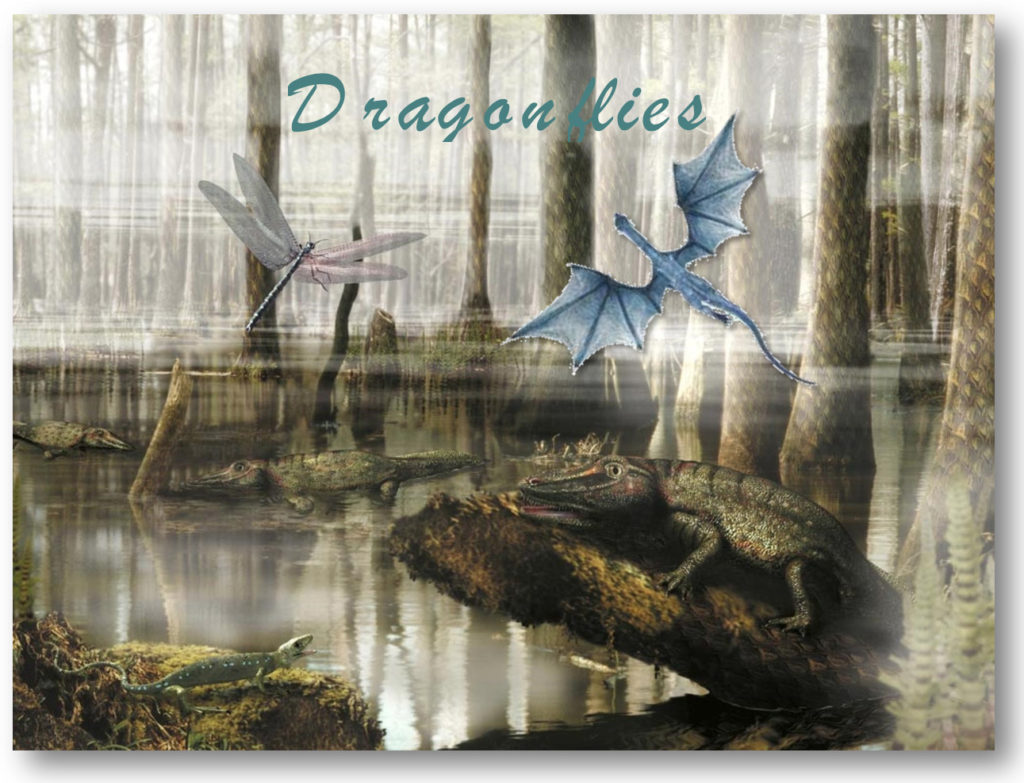
Background image from Nat Geo.
Dragonflies were one of the first insects that evolved into flight. They came into being over 300 million years ago, pre-dating the arrival of dinosaurs. The name “dragonfly” came from myths that they and their taxonomic cousins, “damselflies,” really used to be dragons.
During the Carboniferous period hundreds of millions of years ago, the dragonfly’s relative, the “Griffinfly,” or “Meganeura,” had a wingspan of two to two and a half feet long. Imagine that!
The taxonomic family they belong to “Odonata,” is derived from the Greek “odonates” meaning “tooth,” as it was believed dragonflies had teeth. This isn’t entirely false however. Dragonflies have really strong “mandibles” that they use to crush their prey before swallowing it. With their extraordinary flying abilities, they are the masters of aerial predation, feeding upon flying insects like gnats, mosquitoes, flies and sometimes butterflies, moths and even bees. Some call dragonflies “mosquito hawks.”

Dragonfly Larva
The dragonfly mandibles are usually tucked under their body but will thrust out soon as they see a small insect. Larger insects are caught in the basket-like clutch of their legs, from which very few insects can escape. Even as larvae (immature dragonflies), spending about two years of its life underwater in ponds, lakes and streams, it is a voracious predator, and brutal hunter using those thrusting lower mandibles underwater to catch even small fish.
Will a dragonfly bite a human? Yes and no. If threatened, it will bite, but most aren’t capable of breaking the skin. If handled gently and respectfully, then no. After all, we owe mosquito and pest control to these hunters. They are considered curious insects and can sometimes hover around us. This is in no way an aggressive behavior.
One of the fun summer events to watch for is the formation of dragonfly swarms which can be seen right in our own backyards where there are sunny areas, dense vegetation, moist meadows and lots of food. It’s believed that swarming may give dragonflies the protection of large numbers, and ability to stir up more food.
Dragonflies come in a variety of colors with awesome names like: Eastern Pond Hawk, Big Red Skimmer, Wandering Glider, Halloween Pennant, Blue-eyed Darner, and Dragonhunter! They have the same common anatomical parts as most insects: Head, Thorax, Abdomen, Six Legs, Four wings and an Exoskeleton. Let’s craft a swarm of dragonflies starting with pipe cleaners (chenille sticks) that you can buy at a craft store or order online.
Activity: Pipe Cleaner Dragonfly. Or try making a dragonfly from floral or jewelery wire and beads! Click here to see a photo from a project that Mrs. J completed!
- Click here for the step-by-step instructions (PDF will open in new tab).
Check out these other species below for some inspiration for your dragonfly crafts. Have you seen any of these species in the wild?

From left to right: Eastern Pond Hawk (male) from ON Nature; Big Red skimmer from Nature Collective; Halloween Pennant from Arizona Dragonflies; Black Saddlebags from University of Wisconsin Milwaukee.
Click here to visit InsectIdentification.org and to see a list of dragonfly and damselfly species you may likely see in Maine!
Keep your eye out for the Mount Agamenticus Region Dragonfly ID!
~
The update that follows (with Migration, Dragonfly Eyes, and the Twig Dragonfly craft) can be downloaded as a separate PDF including additional images and links by clicking here (link will open in a new tab). Enjoy!
Migration
Birds migrate, butterflies migrate, and dragonflies migrate! They all make epic journeys of thousands of miles. You’d think delicate creatures like these would be blown to bits by strong winds and storms.
Researchers found that the Common Green Darner — a large, abundant dragonfly found across North America — takes three generations to complete its annual cycle (we remember that Monarch butterflies need for generations). While scientists know that insects migrate, data on the migration of many species is limited.
The Green darner has a wingspan of about three inches, but it migrates over 373 miles with some of them flying over 1,553 miles!
From Introduction to the Odonata, UCMP Berkeley: “Dragonflies can fly forward at about 100 body-lengths per second, and then backwards at about 3 body-lengths per second. They are also capable of hovering in the air for about a minute.” Read more here.
“There are massive insect declines going on around the world,” says Peter Marra, head of the Smithsonian Migratory Bird Center. “So, understanding these complex biological patterns is essential to determine why different populations might be declining.” Read this article, Smithsonian Scientists Unlock the Mystery of Dragonfly Migration, for more fascinating information.
In addition, Mrs. J highly recommends watching this 15-minute video produced by National Geographic on the lifecycle of the dragonfly. Link will open in a new tab; scroll down for video.
A Word About Dragonfly Eyes
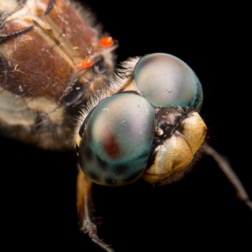
From National Geographic
Dragonflies have very large “compound” eyes, which means they have thousands of tiny lenses that make up each eye. These tiny lenses are part of the “ommatidia” that allow the dragonfly to see in all directions – front, sides, and in back! There are about 28,000 individual ommatidium see in all directions – front, sides, and in back! There are about 28,000 individual ommatidium, and together the two eyes cover most of the dragonfly’s head. More than 80% of their brain is devoted to analyzing visual information.
Activity: Twig Dragonflies. Let’s get creative and celebrate these beautiful and fascinating creatures by going outdoors to find our craft materials from our tree friends and make Twig Dragonflies!
If you’ve got Maple trees in your yard or neighborhood, you may have noticed that they are sending their seeds out at this time. Some people call them helicopters, whirligigs, twisters, or keys. The formal term for this winged seed is, “samara.” Mrs. J used dry Norway maple seeds for wings; dry Sugar maple seeds for the eyes, and Red oak tree twigs for the body. Simple glue is all you need, paints if you have them.
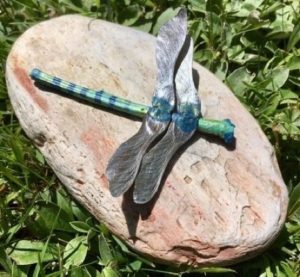
Remember to check if collection is permitted when gathering natural materials for your craft projects! The Mount Agamenticus Conservation Region follows a no collection policy, but you probably have materials in your own yard or even around your neighborhood!
Last modified: July 19, 2020



